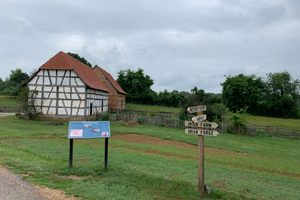About
An unassuming storefront in Staunton, Virginia, is actually an aperture into a world of photographic wonder about the history of cameras from around the world. You'll find Kodaks, Polaroids, Leicas, Konicas, Rikens, Rolleiflexes, and virtually any camera you can name here.
Although the museum’s cases and shelves teem with an overwhelming number of objects, thoughtful signs guide even the novice to zoom in on unique items. In one corner sits a movie camera like the type used by Leni Riefenstahl, and nearby is a Graflex camera favored by press photographers because its sturdy construction made it useful as a weapon. In another corner is a “magic lantern” from 1900, which used an oil lamp to project images without negative effect.
A careful observer will quickly spy a cabinet overflowing with miniature and novelty cameras used primarily for espionage. What at first appear to be lighters, cigarette packs, watches, and other objects are actually clandestine cameras. Of special note is the Secam Stylophot manufactured in Paris in 1955. While it was meant to look like a pen, it has more of a kazoo or nose-hair trimmer appearance.
Nearby is an expansive Brownie exhibit that contains samples of every one of the more than 400 models that were produced. This was the first camera produced for the general public at affordable prices. The early box camera styles, for example, sold for $2 and their popularity completely changed the world of photography.
As amateur photography gained in popularity, styles likewise changed. One whole section is devoted to novelty cameras produced primarily for children, including Looney Tunes and Barbie themed Polaroids, Roy Rogers box cameras, and a Mickey Mouse Fuji.
In addition to thousands of cameras, the museum displays a variety of historical photographs including Daguerreotypes and tintypes from the 19th century. Impressively, the collection includes an original photograph of Robert E. Lee and the family photo album of John Wilkes Booth.
Related Tags
Published
October 28, 2019

















































